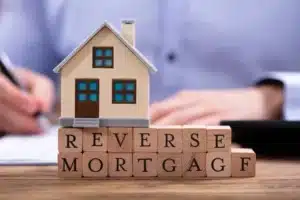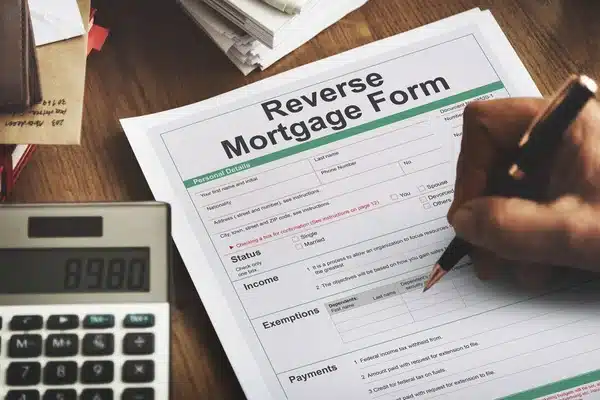Reverse mortgages can be a valuable financial tool for seniors who want to access the equity in their homes without having to sell or move. However, like any financial product, reverse mortgages come with risks, not just for the borrower, but also for the lender.
Explore the major risk for the bank in a reverse mortgage. Specifically, learn how reverse mortgages work, the risks associated with them, and how lenders mitigate these risks. By understanding the risks involved, seniors can make informed decisions about whether a reverse mortgage is right for them.
Understanding Reverse Mortgage
A reverse mortgage is a type of loan that allows seniors aged 62 and older to access the equity in their homes without having to sell or move. Unlike a traditional mortgage, where the borrower makes monthly payments to the lender, with a reverse mortgage, the lender makes payments to the borrower. The loan is repaid when the borrower sells the home, moves out, or passes away.
There are three types of reverse mortgages:
- Single-purpose reverse mortgages: These are offered by state and local government agencies and nonprofits for specific purposes, such as home repairs or property taxes.
- Home Equity Conversion Mortgages (HECMs): These are insured by the Federal Housing Administration (FHA) and are the most common type of reverse mortgage. They can be used for any purpose.
- Proprietary reverse mortgages: These are offered by private companies and are typically used for high-value homes.
With a reverse mortgage, the borrower has several options for receiving payments. They can receive a lump sum payment, regular monthly payments, or a line of credit that can be drawn upon as needed. The amount of the loan is based on the value of the home, the borrower’s age, and the interest rate. The older the borrower is, the more money they can receive.
How a Reverse Mortgage Works
A reverse mortgage is a type of loan that allows homeowners, typically seniors aged 62 and older, to convert a portion of the equity in their homes into cash. Unlike a traditional mortgage, where the borrower makes monthly payments to the lender, with a reverse mortgage, the lender makes payments to the borrower. The loan is repaid when the borrower sells the home, moves out, or passes away.
When a borrower takes out a reverse mortgage, they have several options for receiving payments. They can receive a lump sum payment, regular monthly payments, or a line of credit that can be drawn upon as needed. The amount of the loan is based on the value of the home, the borrower’s age, and the interest rate. The older the borrower is, the more money they can receive.

The borrower retains ownership of the home and is responsible for paying property taxes, homeowners insurance, and other expenses related to homeownership. Interest and fees accrue over time, increasing the amount owed on the loan.
The longer the borrower has the reverse mortgage, the more interest and fees will accrue. This means that the amount owed on the loan can exceed the value of the home, which is a major risk for the lender.
Mitigating Risk for the Bank
To mitigate this risk, lenders typically require a financial assessment of the borrower’s ability to pay property taxes and insurance. They also limit the amount of equity that can be withdrawn in the first year of the loan and require mortgage insurance to protect them if the amount owed on the loan exceeds the value of the home.
When the borrower sells the home, moves out, or passes away, the loan must be repaid. The amount owed includes the principal, interest, and fees that have accrued over the life of the loan. If the amount owed exceeds the value of the home, the borrower’s heirs are not responsible for the difference. The lender is responsible for any shortfall, which is covered by mortgage insurance.
It’s important for borrowers to carefully consider their options and understand the risks and benefits of a reverse mortgage before deciding whether to take out a loan. They should consult with a financial advisor or housing counselor to ensure they make an informed decision.
Major Risk for the Bank in a Reverse Mortgage
The major risk for the bank in a reverse mortgage is that the amount owed on the loan can exceed the value of the home. This can happen because the interest and fees associated with the loan accumulate over time.
Take note, the longer the borrower has the reverse mortgage, the more interest and fees will accrue. If the borrower lives a long time, this can result in a significant amount of interest and fees, which can exceed the value of the home.
This poses a risk for the lender because if the amount owed on the loan is greater than the value of the home when the loan is due, the lender may not be able to recoup their investment. The lender is responsible for the difference, which can result in a loss for the bank.
To mitigate this risk, lenders require a financial assessment of the borrower’s ability to pay property taxes and insurance. They also limit the amount of equity that can be withdrawn in the first year of the loan and require mortgage insurance to protect them if the amount owed on the loan exceeds the value of the home.
Conclusion
In conclusion, a reverse mortgage can be a valuable financial tool for seniors who want to access the equity in their homes without having to sell or move. However, it’s important to understand the risks involved, including the risk of the amount owed on the loan exceeding the value of the home. Lenders mitigate this risk by requiring financial assessments and limiting the amount of equity that can be withdrawn in the first year of the loan.
If you are considering a reverse mortgage and want to learn more about the process and requirements, contact Sprint Funding. Our team of experienced professionals can help you navigate the process and determine if a reverse mortgage is right for you. We are committed to helping seniors make informed decisions about their finances and housing options.





